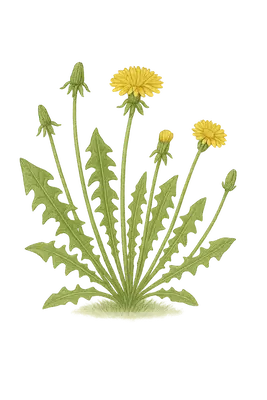Weed Pollen
Description
Weeds are a diverse group of plants that thrive in various environments, often growing rapidly and producing significant amounts of pollen. Common allergenic weeds include ragweed, mugwort, pigweed, and lamb’s quarters. The pollen from these plants is lightweight and easily becomes airborne, leading to widespread distribution and potential allergic reactions in susceptible individuals.

Allergy Symptoms
Exposure to weed pollen can trigger various allergic reactions, including:
- Nasal symptoms: Sneezing, runny or congested nose.
- Ocular symptoms: Itchy, watery, and red eyes.
- Respiratory issues: Coughing, wheezing, and exacerbation of asthma symptoms.
- Skin reactions: Itchy skin or hives in some individuals.
Additionally, individuals allergic to weed pollen may experience Oral Allergy Syndrome (OAS), characterized by an itchy mouth or throat after consuming certain fruits, vegetables, nuts, or beans due to cross-reactivity.
Typical Pollination Period
The pollination period for weeds varies by region:
- United Kingdom: Weed pollen season lasts from late June to early September, depending on the plant species.
- United States: Weed pollen starts in the summer and ends in the fall, with ragweed being the most common weed allergen.
- Australia: Weed pollen can be present from late summer into autumn, varying by specific weed species and region.
Geographic Distribution
Weeds are ubiquitous and can be found in nearly every habitat worldwide, including:
- Urban areas: Gardens, roadsides, and vacant lots.
- Rural areas: Fields, pastures, and along fence lines.
- Natural landscapes: Meadows, riverbanks, and forest edges.
Tips for Reducing Exposure and Managing Allergies
- Monitor pollen forecasts: Stay informed about local weed pollen levels during the pollination season.
- Limit outdoor activities: Especially on high pollen count days and during early morning hours when pollen levels are typically higher.
- Protect indoor environments: Keep windows closed and use air purifiers to reduce indoor pollen exposure.
- Personal hygiene: Shower and change clothes after being outdoors to remove pollen.
- Yard maintenance: Regularly remove or control the growth of allergenic weeds around your home.
- Medication: Use antihistamines, nasal corticosteroids, or other allergy medications as recommended by a healthcare professional.
- Consult an allergist: For persistent or severe symptoms, seek advice from an allergist who may recommend immunotherapy or other treatments.